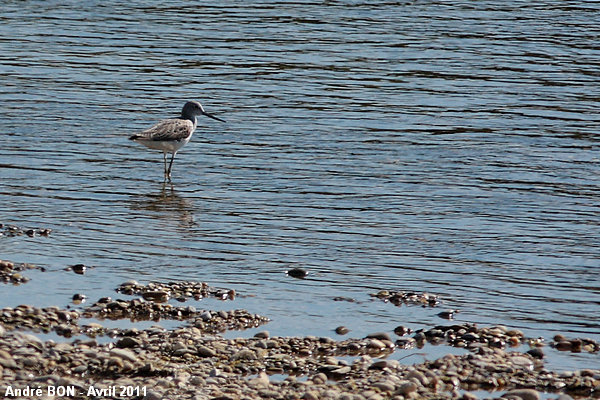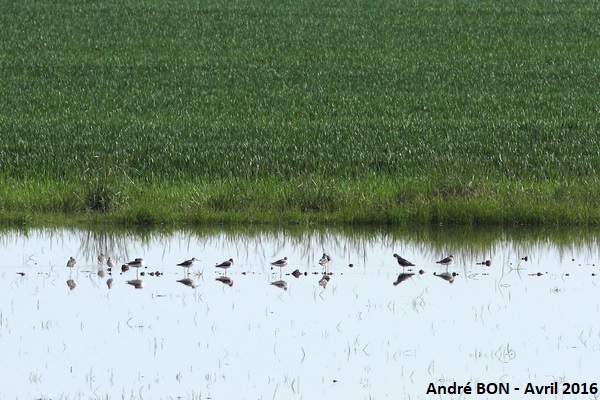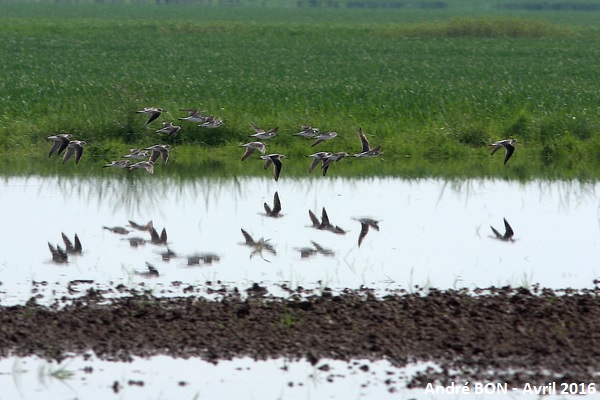


| Common Greenshank (Tringa nebularia (Gunnerus, 1767)) |



|
|
Scientific name: Tringa nebularia (Gunnerus, 1767) Common name: Common Greenshank French name: Chevalier aboyeur Order: Charadriiformes Family: Scolopacidae Size: Body size: 30 to 35 cm; weight: 140 to 270 g; Wingspan: 53 to 60 cm. Habitat: Moorland and dry areas in the northern breeding range, mudflats, mangroves, lagoons, fresh water lakes and sandy beaches in the winter range. Food: Water insects, crustaceans, molluscs, worms and small fishes caught while slowly walking in shallow water. Nesting: The nest is a shallow scrape lined with grasses and leaves. There are generally four eggs per brood. Migration: The Common Greenshanks migrate to the northern regions in March-April, adults move back southwards late June early July, juveniles will migrate southwards later between July and October. Geographic area: North of Scotland, Scandinavia, northern Asia during the breeding season. Western Europe, Mediterranean region, Africa, southern Asia, Australia and New Zeeland in winter. |
The Common Greenshank is a medium size wader with a slightly up-turned bill. The upper side is grey with black marks aligned to form some kinds of longitudinal stripes. The under side is white with rounded or arrow-shaped marks on the chest and on the lateral sides. In winter plumage the upper side is more pale grey and the underside is more uniformly white. |
| [To know more about the Common Greenshank] [Next picture] [Top] |

|
I was standing on the bank of the Doubs river when a group of three Common Greenshanks passed not far from me, rather quickly walking in shallow water and looking for food. I was not perfectly situated for the picture and the light was rather hard. I have shot a few pictures in order to confirm the species identification as I do not have much experience on wader species. |
| [To know more about the Common Greenshank] [Next picture] [Previous picture] [Top] |

|
Heavy rains have caused the river to rise. It begins to flood the cultivated areas. This doesn't seem to displease this flock of Common Greenshanks. |
| [To know more about the Common Greenshank] [Previous picture] [Top] |

|
I tried to approach to get better pictures but the flock is shy and flew away. |